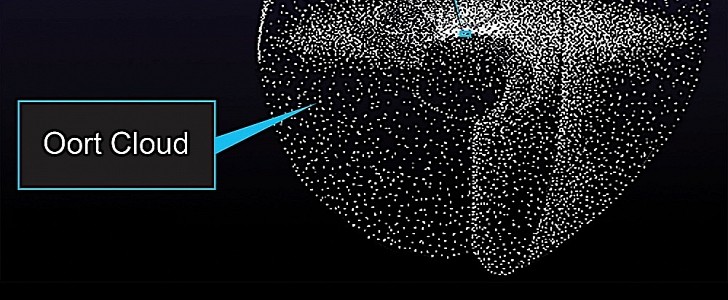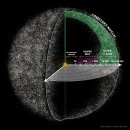The Oort cloud is a region in our solar system's vicinity we don’t know all that much about. Named after Dutch astronomer Jan Oort, it is a theoretical concept comprising planetesimals (solid objects believed to reside in protoplanetary and debris disks) at distances between 0.03 and 3.2 light-years from our Sun.
Too far away to be of any real use to us, with our current level of technology, the Oort cloud is in effect the mysterious boundary of our solar system, one that probably hides amazing wonders. And one of these wonders may just have been spotted.
Earlier this week, astronomers Pedro Bernardinelli and Gary Bernstein announced they’ve discovered what may very well be the largest Oort cloud object unearthed so far.
Dubbed 2014 UN271, the space rock was found by studying images gathered for the Dark Energy Survey between 2014 to 2018. It’s still too far away to make accurate measurements, but astronomers believe it may be between 100 and 370 km (62 to 230 miles) in length.
The object caught these guys’ attention thanks to its orbit, stretching from far out into the Oort cloud right into our solar system. The object is presently just past the orbit of Neptune.
Sometime in 2031, it will make its closest approach to our planet. Although it is presently too early to estimate how close it will pass, it’s worth noting its orbit is almost perpendicular to the plane created by the nine inner planets as they move around the Sun.
Astronomers expect that as it comes closer to the Sun, the object will develop a comet-like tail, although that is not a given either. If it does, it will become the largest comet ever discovered. It will also get brighter, and that should allow Earthlings to study it better—expectations are it will be as bright in the night sky as, say, Pluto or its moon Charon.
Earlier this week, astronomers Pedro Bernardinelli and Gary Bernstein announced they’ve discovered what may very well be the largest Oort cloud object unearthed so far.
Dubbed 2014 UN271, the space rock was found by studying images gathered for the Dark Energy Survey between 2014 to 2018. It’s still too far away to make accurate measurements, but astronomers believe it may be between 100 and 370 km (62 to 230 miles) in length.
The object caught these guys’ attention thanks to its orbit, stretching from far out into the Oort cloud right into our solar system. The object is presently just past the orbit of Neptune.
Sometime in 2031, it will make its closest approach to our planet. Although it is presently too early to estimate how close it will pass, it’s worth noting its orbit is almost perpendicular to the plane created by the nine inner planets as they move around the Sun.
Astronomers expect that as it comes closer to the Sun, the object will develop a comet-like tail, although that is not a given either. If it does, it will become the largest comet ever discovered. It will also get brighter, and that should allow Earthlings to study it better—expectations are it will be as bright in the night sky as, say, Pluto or its moon Charon.
The object showed no coma in any of the (5 band) DES images between 2014-2018 (when it moved from 29 to 23 au). The residuals of a scene-modeling photometry of this objects shows consistency with noise (both in each image and in a stack of all 30 something images we have) pic.twitter.com/7JIibMPyZS
— Dr. Pedro Bernardinelli (@phbernardinelli) June 20, 2021







